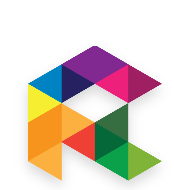Cybersecurity is one of our passion areas here at RIGA. And we don’t just use best practices for cybersecurity for our own business – we also offer our skills to customers.
But what exactly does cybersecurity cover?
NIST defines cybersecurity as the “prevention of damage to, protection of, and restoration of computers, electronic communications systems, electronic communications services, wire communication, and electronic communication, including information contained therein, to ensure its availability, integrity, authentication, confidentiality, and nonrepudiation.”
Read: Why Cyber Security Awareness Should Be Your Top Priority in 2024
Cybersecurity has never been more important – or complex! But we’re here to give a quick primer on what it means for business, what’s involved, where threats can lie, and why everyone could use a helping hand.
What is the goal of cybersecurity?
The goal of cybersecurity is to prevent damage to an organisation or individual caused by insecure digital systems. Damage could be to a company’s reputation, in the form of fines due to non-compliance with data laws like the GDPR, monetary losses from systems being down, and losing customers.
Threats to the security of digital systems come from malicious actors (e.g. hackers), insider threats (e.g. an unhappy employee), misconfigured systems (e.g. accidentally having a database publicly accessible)), and human error (e.g. sending an email with sensitive IP to the wrong person).
Tackling all these different threat types across all the different digital systems within an organisation is no small feat. It takes careful infrastructure, software, and process design and configuration, selecting the right products from the right companies, implementation of devices and tools like Identity and Access Management solutions, firewalls and Intrusion Prevention Systems, monitoring and alerting, keeping up to date with new and emerging threats, and training the team.
Where does cybersecurity extend?
Cybersecurity is about ensuring the security of your digital systems, data, devices, and communications. Our digital landscape has grown beyond physical offices, with physically-networked desktops and in-house servers to include cloud services, an explosion of SaaS solutions, mobiles and IoT devices, remote access, and virtualization – and that’s just a standard organisation’s footprint. This means that cybersecurity has grown in complexity, too.
We now must manage remote endpoints to ensure secure access to company data without the data actually residing on the device. We need to do due diligence on the software supply chain for SaaS products we’re looking to purchase. We need to train our employees to be vigilant against the threat of more and more sophisticated phishing emails. We need to implement Zero Trust security solutions for the safest access configurations. There is a lot to consider!
The CIA triad
While the CIA triad sounds a bit like a conspiracy theory, what it stands for is Confidentiality, Integrity, and Availability. For cybersecurity to be effective, enterprise data must have these qualities at all times. Data must be kept confidential, typically through access controls, remain free from unauthorized tampering (integrity), which can be achieved through encryption, and remain available, so that the right people can access the right data at just the right time.
Let’s help lock down your cybersecurity
There’s so much to cybersecurity we could literally talk about it for years on end. But if you want to know whether you’re doing cybersecurity right, then why not check in with us for an assessment or new program roll-out?
We’re not only Australia and New Zealand’s only cyber insurance managed service provider, we can help with ISO certifications, Essential 8 compliance, and heaps more. Let’s chat cybersecurity and your business – you’ll never regret derisking your business with RIGA.











